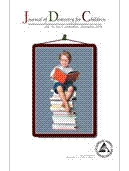
General Anesthesia Versus Moderate Sedation: Factors Affecting Caregivers' Decisions for Children's Dental Treatment Modality
Methods: Parents completed a cross-sectional survey to determine which factors they considered in their decision between MS or GA for dental treatment. The relative importance of social, financial, and patient-level factors, the importance of dentists' recommendations, and the reported knowledge levels and sources of information regarding treatment modality were also assessed.
Results: The majority of 130 parents surveyed reported at least a moderate amount of knowledge about GA and MS. Although most identified their dentist as the primary source of information (45 percent for GA, 51 percent for MS), many reported having no source of information about either (23 percent for GA, 16 percent for MS). For both groups, the dentist's recommendation for MS or GA was more influential than cost, risk profile, and the number of missed work and school days (P <0.001). Being well-informed about the treatment modality was more influential than the dentist's recommendation only for the parents who chose MS (P <0.001).
Conclusion: Parents' self-reported knowledge regarding their treatment modality was relatively low. The choice of treatment modality for pediatric dental care relied mostly on the dentist's recommendation.
Keywords: EARLY CHILDHOOD CARIES; GENERAL ANESTHESIA; MODERATE SEDATION; PEDIATRIC DENTISTRY
Document Type: Research Article
Affiliations: 1: Dr. Avenetti is an associate professor and graduate program director, Department of Pediatric Dentistry, College of Dentistry, University of Illinois Chicago, Chicago, Ill., USA;, Email: [email protected] 2: Dr. Lee is an associate professor, Department of Anesthesiology, College of Medicine, University of Illinois Chicago, Chicago, Ill., USA 3: Dr. Mehta is a pediatric dentist in private practice, Austin, Texas, USA 4: Dr. Raja is an associate professor, Department of Oral Medicine and Diagnostic Sciences, College of Dentistry, University of Illinois Chicago, Chicago, Ill., USA 5: Dr. LeHew is a research assistant professor, Department of Pediatric Dentistry, College of Dentistry, University of Illinois Chicago, Chicago, Ill., USA
Publication date: 01 September 2021
- Acquired after the merger between the American Society of Dentistry for Children and the American Academy of Pediatric Dentistry in 2002, the Journal of Dentistry for Children (JDC) is an internationally renowned journal whose publishing dates back to 1934. Published three times a year, JDC promotes the practice, education and research specifically related to the specialty of pediatric dentistry. It covers a wide range of topics related to the clinical care of children, from clinical techniques of daily importance to the practitioner, to studies on child behavior and growth and development. JDC also provides information on the physical, psychological and emotional conditions of children as they relate to and affect their dental health.
- Information for Authors
- Submit a Paper
- Subscribe to this Title
- Membership Information
- Information for Advertisers
- Ingenta Connect is not responsible for the content or availability of external websites
- Access Key
- Free content
- Partial Free content
- New content
- Open access content
- Partial Open access content
- Subscribed content
- Partial Subscribed content
- Free trial content